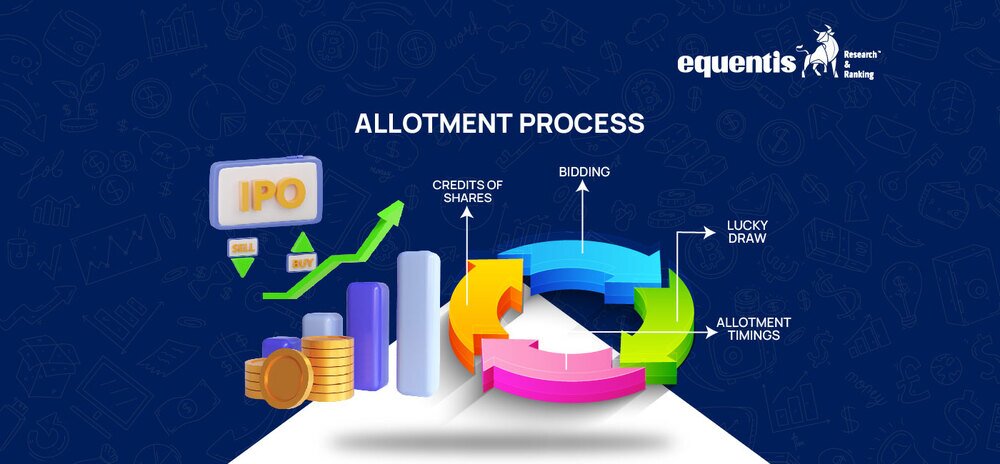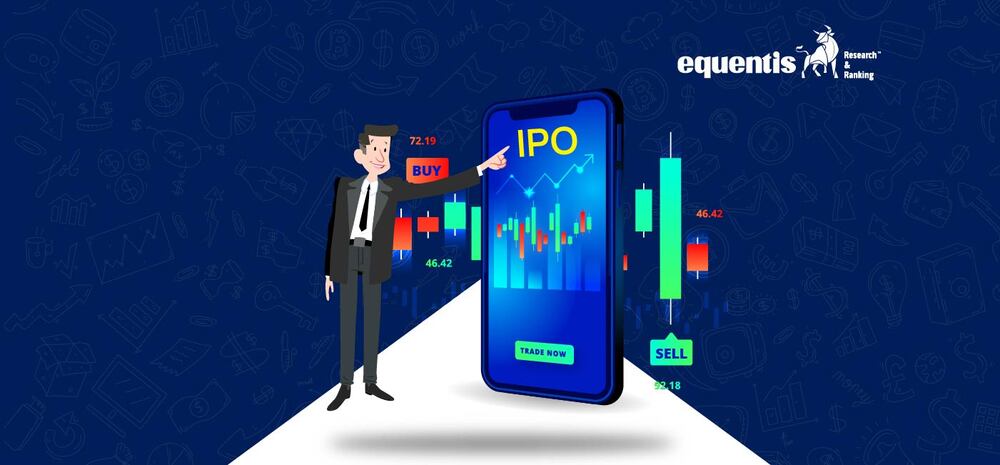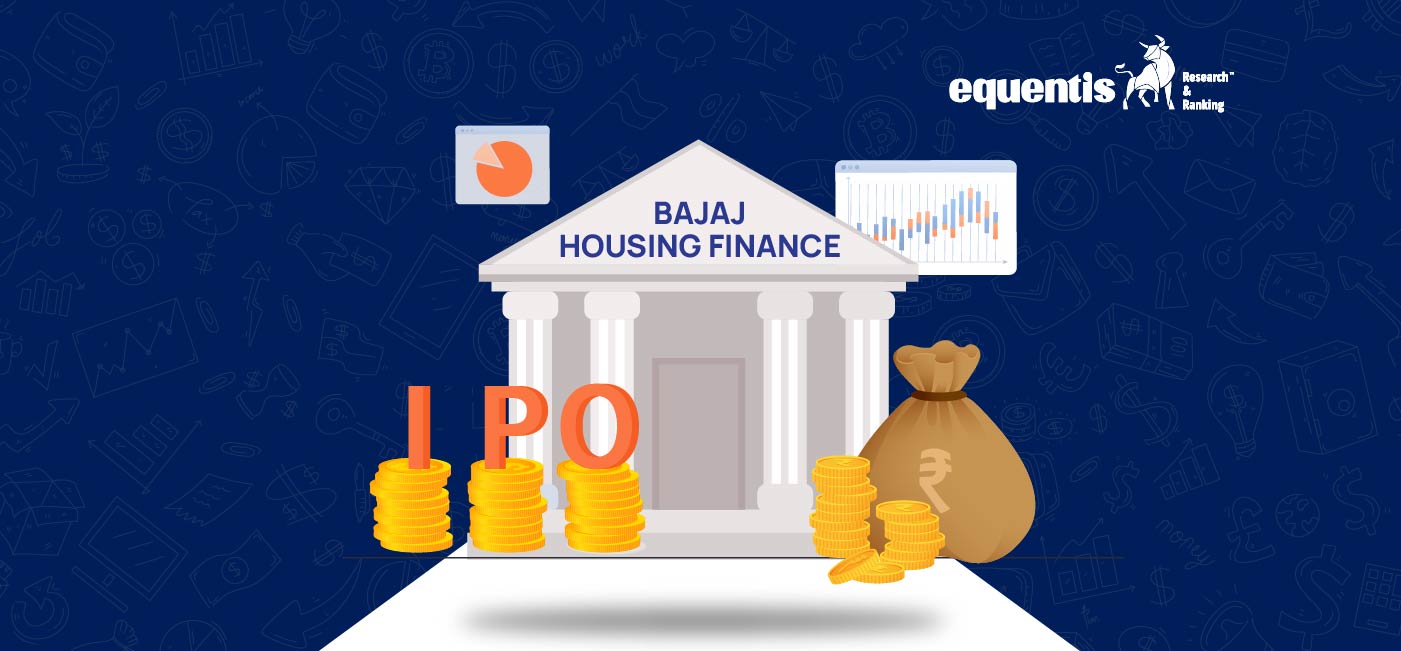IPO Performers
Listed IPOs performing on the stock exchange
What are IPO Performers?
Listed IPOs doing well on the exchange
IPO Performers are companies that have shown strong stock performance after their Initial Public Offering. These companies have delivered notable returns to investors since their listing, often reflecting their strong fundamentals, investor interest, and market demand.
Such IPOs indicate solid business models, robust financials, or favorable industry trends. Analyzing IPO performers lets investors gain insights into successful market entrants and potential long-term growth opportunities.
IPO Performers
Get all the details here!

Company Name
Listing Date
Listed Price
CMP
% Change
![]() Unlock Stock of the Month
Unlock Stock of the Month
T&C*
How do IPOs work?
An IPO (Initial Public Offering) is when a private company offers its shares to the public for the first time. Investors can apply to buy these shares during the IPO in the primary market. Once the IPO is complete, the company's shares are listed on stock exchanges, where they can be traded publicly. Companies usually launch an IPO to raise funds for growth and expansion.
 Learn More
Learn MoreHow do you apply for IPOs?
To participate in an IPO, you first need to open a Demat and trading account. Once your account is set up, check the available IPOs and select the one you wish to invest in. Next, apply through your broker account and confirm your application. After submitting your application, wait for the allotment process to complete. Once the shares are allotted to you, you can begin trading them in the stock market.
 Learn More
Learn MoreWho can invest in IPOs?
- Retail Investors: Individual investors with a demat account.
- Qualified Institutional Buyers (QIBs): Institutions like mutual funds and insurance companies.
- Foreign Institutional Investors (FIIs): Foreign entities allowed under regulatory norms.
- High Net-Worth Individuals (HNIs): Wealthy individuals with significant financial resources.
- Corporate Entities: Companies investing as part of their strategy.
 Learn More
Learn MoreHow to check allotment status of IPOs?
You can check your IPO allotment status by visiting the registrar's website, such as Link Intime or KFintech, and entering details like your PAN, application number, or DP/client ID to see if shares have been allotted. Alternatively, stock exchanges like NSE and BSE also provide allotment status checks through their IPO-specific pages, where you can input the required information to access the results.
 Learn More
Learn MoreIPO reads
Stay updated with the latest IPO developments
Spotlight on IPOs
Breaking down IPOs for you!
FAQs on IPO performers
Find answers to common questions!
The best IPO performers are companies that deliver exceptional returns after listing on the stock exchange. These IPOs show substantial price appreciation, often outperforming the market and meeting or exceeding investor expectations. Strong demand, good company fundamentals, and favorable market conditions drive this performance.
Some of the top IPO performers of 2024 include:
- Jyoti CNC Automation (January 16, 2024): Listed at ₹372, it surged to ₹1,278.35 by August 2024, delivering a 244% return.
- Ola Electric Mobility (August 9, 2024): With an issue price of ₹76, it gained 68%, reaching ₹127.48 by August.
- Bharti Hexacom (April 12, 2024): Listed at ₹755, it saw a rise of 57%, reaching ₹1,182
- Go Digit General Insurance (2024): A standout in the insurance sector with solid market performance.
Several factors can drive an IPO’s strong performance:
- High Demand: Oversubscription indicates strong interest from investors.
- Strong Fundamentals: Companies with solid financials and sustainable business models often outperform their competitors.
- Growth Sector: Initial Public Offerings (IPOs) in high-growth industries, such as technology, electric vehicles, and insurance, typically attract more investors.
- Market Conditions: A favorable market environment, characterized by economic optimism and positive investor sentiment, is crucial for attracting investment.
The first-day performance is a crucial indicator. A strong debut typically signals high demand and market confidence. However, a strong first-day performance doesn't guarantee long-term success, and investors should evaluate the company’s fundamentals and long-term growth potential.
Not necessarily. While some IPOs may be priced at a premium, many Best Performers are priced based on their potential for future growth. However, investors must still assess whether the IPO is reasonably valued based on its earnings potential, industry outlook, and other fundamentals.
No, once listed, IPO shares are traded on the stock exchange. Investors buy and sell them through brokerage accounts, and the company does not directly issue shares to individual buyers.
Yes, listed companies can conduct secondary offerings to raise additional capital. This helps fund expansion, research, and other strategic initiatives.
Listed IPOs are exposed to market volatility, economic conditions, and regulatory changes. Maintaining investor confidence and effective communication becomes crucial.
Share value is influenced by market forces such as supply, demand, and investor sentiment. Stock prices fluctuate based on a company's perceived performance and potential.
Do shareholders have voting rights in a listed IPO?
Yes, shareholders typically have voting rights, allowing them to participate in decisions during annual general meetings and have a say in the company's affairs.
Investors can monitor share prices in real time through stock market platforms, financial news, and the company's investor relations page. Stock tickers provide up-to-date information.
After the IPO launch, the company applies for a listing on a stock exchange. Upon approval, its shares become part of the exchange's listed IPOs, enabling public trading.
You can find historical information on listed IPOs from various sources. Financial websites: Many financial websites offer historical IPO data, including performance metrics like opening and closing prices, stock charts, and performance comparisons.
Look for sections dedicated to "IPOs" or "Markets." Stock exchanges: The websites of major stock exchanges often maintain archives of listed IPOs, including performance data. Search for "listed IPOs" or "historical data" on the exchange's website.
Look for sections dedicated to "IPOs" or "Markets." Stock exchanges: The websites of major stock exchanges often maintain archives of listed IPOs, including performance data. Search for "listed IPOs" or "historical data" on the exchange's website.
An IPO allotment, the process of assigning shares to investors after a listed IPO, involves several steps: Application: Investors submit bids during the IPO window, specifying the desired number of shares. Oversubscription: When demand exceeds available shares, the process enters oversubscription.
Selection: A computerized system impartially selects winning bids based on predetermined criteria, often considering factors like bid price, investor type (retail vs. institutional), and reservation categories. Allocation: Winning applicants receive confirmation and have their shares credited to their accounts. Unsuccessful applicants receive a refund.
Selection: A computerized system impartially selects winning bids based on predetermined criteria, often considering factors like bid price, investor type (retail vs. institutional), and reservation categories. Allocation: Winning applicants receive confirmation and have their shares credited to their accounts. Unsuccessful applicants receive a refund.
Checking your listed IPO allotment status involves one of two methods:
Registrar Website: Visit the website of the registrar handling the specific IPO. They typically offer a dedicated section for status inquiries, requiring your application details like PAN and bid reference numbers.
Stock Exchange Platform: Some stock exchanges also provide allotment status checks on their websites. Look for sections dedicated to "IPOs" or "Investor Services" and search for the specific IPO you applied for.
Stock Exchange Platform: Some stock exchanges also provide allotment status checks on their websites. Look for sections dedicated to "IPOs" or "Investor Services" and search for the specific IPO you applied for.
Determining the price band for listed IPOs involves a collaborative process rather than being dictated by a singular entity. Here's how it works: The issuer company, the entity going public, plays a vital role in setting the pricing parameters. This decision is influenced by various factors, such as the company's valuation, financial performance, and comparisons within the industry.
The investment bank appointed for the IPO thoroughly analyses market demand, investor interest, and the company's financial health. Working closely with the issuer company, the investment bank advises and collaborates to determine a suitable price range that aligns with market conditions and investor expectations. This collaborative effort ensures a comprehensive evaluation and fair pricing strategy for the IPO.
The investment bank appointed for the IPO thoroughly analyses market demand, investor interest, and the company's financial health. Working closely with the issuer company, the investment bank advises and collaborates to determine a suitable price range that aligns with market conditions and investor expectations. This collaborative effort ensures a comprehensive evaluation and fair pricing strategy for the IPO.
The lot size for a listed IPO is predetermined through collaboration between the issuing company and the investment bank, considering several key factors. First, market conditions are carefully considered, including investor interest and overall market liquidity.
Second, the company's size and valuation play a significant role; larger companies may opt for larger lot sizes to accommodate higher investment amounts. Additionally, accessibility for retail investors is a priority, ensuring a balance between affordability and encouraging broader participation from individual investors.
The ultimate objective is to establish a feasible lot size for investors and enable the company to raise its targeted capital effectively. The number of shares within a lot remains fixed, allowing investors to apply for multiples of the lot size during the IPO application period.
Second, the company's size and valuation play a significant role; larger companies may opt for larger lot sizes to accommodate higher investment amounts. Additionally, accessibility for retail investors is a priority, ensuring a balance between affordability and encouraging broader participation from individual investors.
The ultimate objective is to establish a feasible lot size for investors and enable the company to raise its targeted capital effectively. The number of shares within a lot remains fixed, allowing investors to apply for multiples of the lot size during the IPO application period.
Investing in newly listed IPOs can be tempting due to their potential for high returns. However, it's crucial to remember that these newest companies on the stock market also carry inherent risks. Unlike established companies with a long track record, recently listed IPOs may have limited information available, making it difficult to assess their future performance accurately.
Therefore, thorough research is essential before considering any latest IPO listing. It involves delving deep into the company's financials, industry trends, and market conditions. This research will help you understand the potential risks and rewards associated with the investment.
Ultimately, investing in listed IPOs should be based on your circumstances. Consider your long-term investment goals and risk tolerance. If you are a risk-averse investor seeking short-term gains, newly listed IPOs may not be suitable. Carefully analyzing and aligning your financial objectives are crucial before making investment decisions.
Therefore, thorough research is essential before considering any latest IPO listing. It involves delving deep into the company's financials, industry trends, and market conditions. This research will help you understand the potential risks and rewards associated with the investment.
Ultimately, investing in listed IPOs should be based on your circumstances. Consider your long-term investment goals and risk tolerance. If you are a risk-averse investor seeking short-term gains, newly listed IPOs may not be suitable. Carefully analyzing and aligning your financial objectives are crucial before making investment decisions.
In the context of listed IPOs, listing gain refers to the positive difference between the issue price and the listing price of the shares.
Here's a breakdown: Issue price: This is the price at which the company offers shares to investors during the listed IPO application window. Listing price: This is the initial price at which the shares start trading on the stock exchange after the listed IPO process is complete.
Therefore, if the listing price is higher than the issue price, investors allotted shares during the listed IPO application process experience a listing gain.
This gain is calculated by subtracting the issue price from the listing price and multiplying the result by the number of shares allotted. It's important to remember that listing gains are not guaranteed and can be volatile. While some listed IPOs experience significant gains on the listing day, others might not or even trade below the issue price, resulting in a loss for investors.
Here's a breakdown: Issue price: This is the price at which the company offers shares to investors during the listed IPO application window. Listing price: This is the initial price at which the shares start trading on the stock exchange after the listed IPO process is complete.
Therefore, if the listing price is higher than the issue price, investors allotted shares during the listed IPO application process experience a listing gain.
This gain is calculated by subtracting the issue price from the listing price and multiplying the result by the number of shares allotted. It's important to remember that listing gains are not guaranteed and can be volatile. While some listed IPOs experience significant gains on the listing day, others might not or even trade below the issue price, resulting in a loss for investors.
You can check the performance of a recently listed IPO by looking at its stock price on financial news websites, stock market apps, or through your brokerage platform. Most of these sources provide real-time data on price movements and historical performance.
After going public, companies must file regular financial reports with regulatory authorities, such as quarterly and annual reports (10-Q and 10-K in the U.S.). These reports contain details on revenue, profit, expenses, and other key financial metrics.
The stock price of a recently listed IPO can be influenced by factors such as overall market conditions, investor sentiment, company performance, news and announcements, and market demand and supply dynamics.
The listing date is significant because it marks the first day the company’s shares are traded on the stock exchange. It can affect investor sentiment and increase volatility as the market determines the stock's fair value.
Yes, once an IPO is listed and trading on the exchange, you can buy shares anytime during market hours, just like any other publicly traded stock.
Before selling shares of a listed IPO, consider the current market conditions, your investment goals, tax implications, the company’s performance, and whether you believe the stock still has growth potential.
Lock-in periods are predetermined after an IPO during which major shareholders (like insiders and company executives) cannot sell their shares. If you are not subject to a lock-up period, you can sell your shares any time after the IPO listing.
Risks include price volatility, potential overvaluation, lack of historical performance data, and uncertain future performance. Additionally, companies may face challenges that can negatively impact their stock price post-IPO
You can find news and updates on a listed IPO through financial news websites, stock market apps, and social media platforms. Following the company's official communications, such as press releases and investor presentations, can provide valuable insights.


 The Phoenix Mills Ltd. (PDF)
The Phoenix Mills Ltd. (PDF)
 Trending Sector
Trending Sector Top Losers
Top Losers Adani Ports and SEZ
Adani Ports and SEZ












